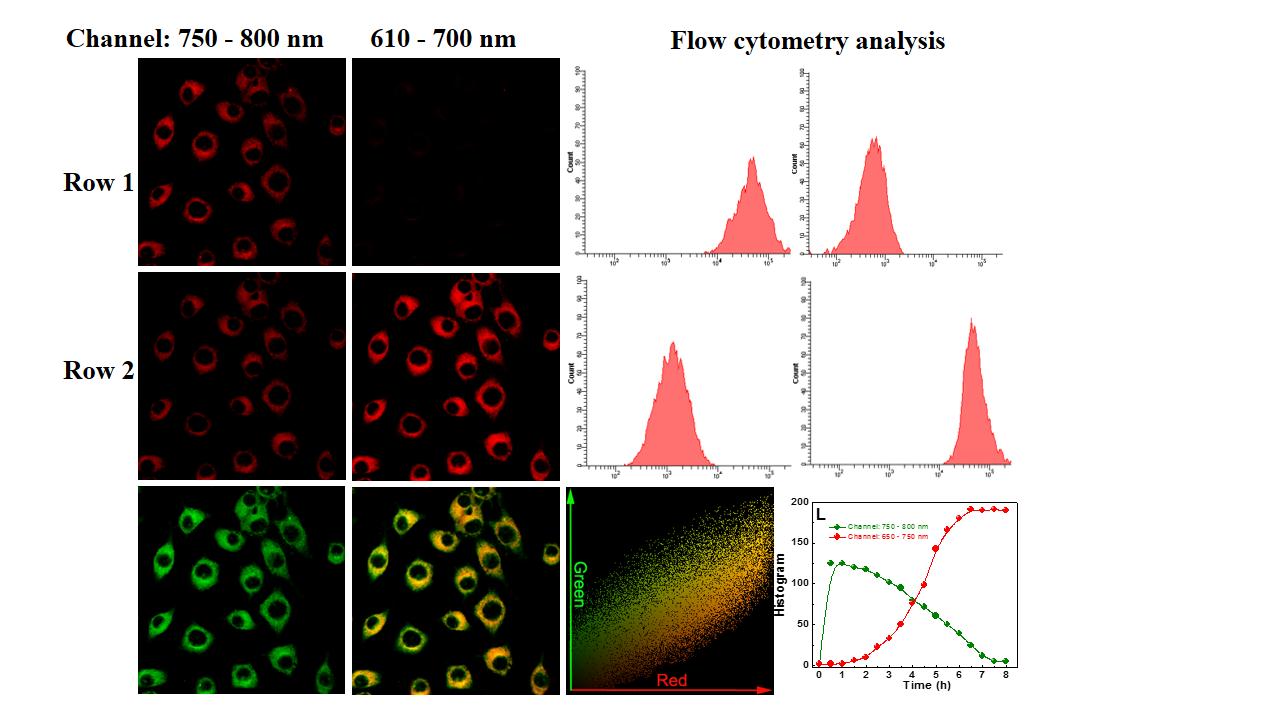
Healthy ecological environment is the material basis of human survival and development, and environment damage will harm human health. Active sulfur species (RSS) within biological cells play important roles in the regulation of the environment and human balance.
The intracellular reactive sulfur species (RSS) as the key sites of sulfur transduction is a general term for sulfur-containing biomolecules which assumes critical responsibilities for physiological and pathological processes in vivo. Among the RSS, H2S has been demonstrated as the third gasotransmitter after nitric oxide (NO) and carbonic oxide (CO). However, emerging evidence indicate that the actual signaling molecular in sulfur transduction in vivo is sulfane sulfur (RSSnSH/RSSnSR) rather than H2S. Furthermore, H2S in high concentration exhibit high cytotoxity, while the cytotoxity of sufane sulfur is quite low.
During the cellular redox signal process, the outburst of reactive oxygen species (ROS) and the production of RSS occur in a very short period of time, and the involved cysteine redox process is independent of the glutathione antioxidant system. Owing to the lack of direct detection tools, the detection of the outburst of ROS and the in-real time physiological actions of RSS has been challenged.
Fluorescent imaging technique has been recognized as a preferred detection technology for bio-reactive species in situ detection in biological system due to its non-invasiveness, high spatiotemporal resolution, good selectivity, high sensitivity, and rapid response, especially the near-infrared (NIR) fluorescent probes which can maximize the penetration depth of tissues and avoid noise from background autofluorescence.
Professor CHEN Lingxin’s group (Environmental Analysis Theory & Engineering Technology, Yantai Institute of Coastal Zone Research) has been focusing on research of “Environment - Health” effects and overall arranging of the fundamental research and development of technology of biological fluorescent detection. The group has made a series of breakthrough on joint detection of ROS and RSS with multi-response under various environment stresses.
Researchers developed several multi-response NIR fluorescent probes (HCy-FN, Mito-ss, Cy-NB and so on) that can directly deliver multi-channel fluorescent signals for in situ and in-real time detection of intracellular outburst of ROS and production of RSS. Fluorescence confocal microscopic imaging illustrates that the probes can be used to investigate the ROS burst and RSS production in situ and in-real time in mitochondria of living cells and in mice. Flow cytometry analyses for cell experiments further confirm the bioimaging results.
The results highlight that the multi-response probe can be used as a direct tool for the detection of ROS and RSS in cells and in mice, which finally achieved the three levels of molecular, cellular and in vivo in situ and dynamic fluorescent imaging analysis of ROS and RSS. These studies are important not only to elucidate the associated generation mechanism of intracellular ROS and RSS, but also lay a foundation of mechanism study of RSS being the real signaling transduction molecules.
The research results have been published on: Biomaterials (2015, 63, 93−101, IF = 8.557); Analytical Chemistry (2015,87,3631−3638, IF = 5.636); Biosensors & Bioelectronics (2015, 74, 156–164, IF = 6.409).

Double-channel fluorescent probes for in situ and in-real time detection of intracellular outburst of ROS and production of RSS (Image by YIC)

86-10-68597521 (day)
86-10-68597289 (night)

86-10-68511095 (day)
86-10-68512458 (night)

cas_en@cas.cn

52 Sanlihe Rd., Xicheng District,
Beijing, China (100864)

